
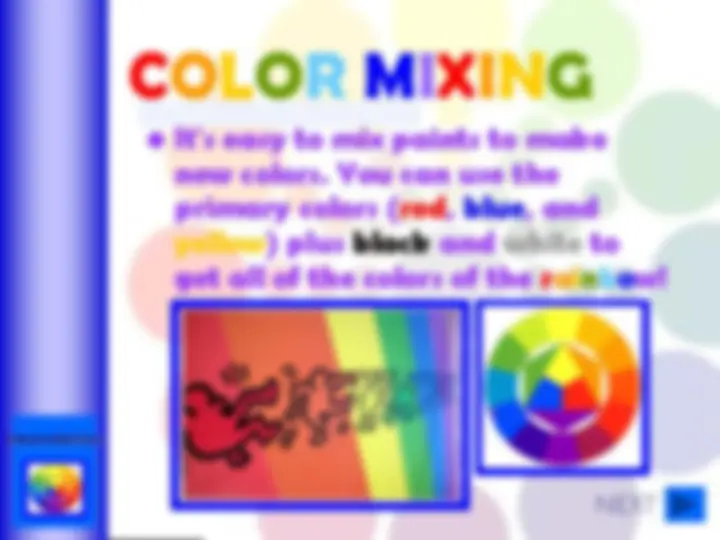
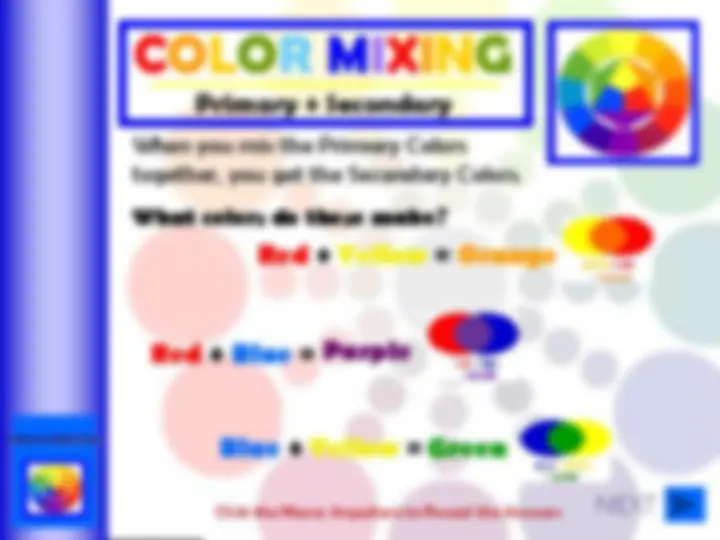
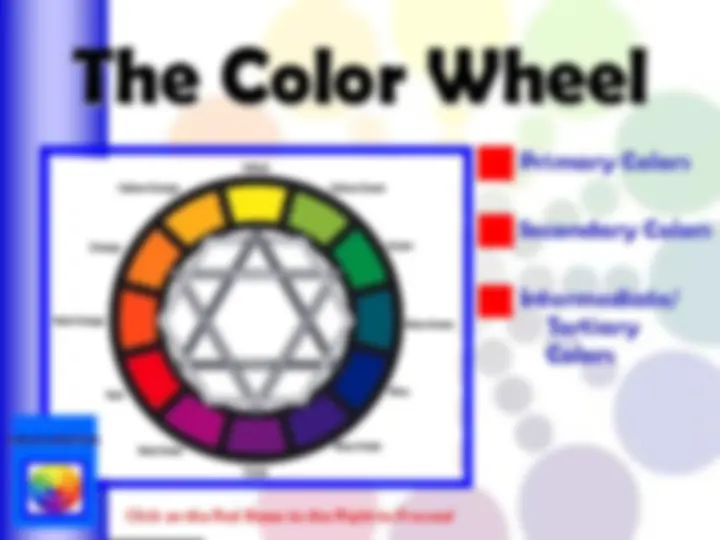
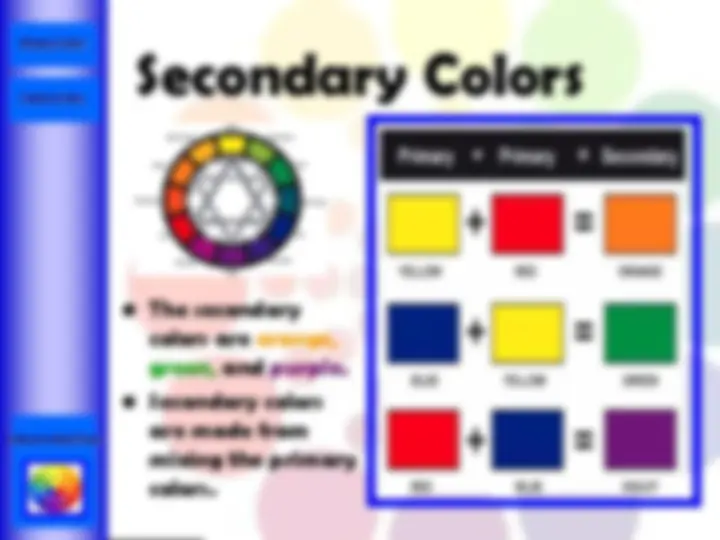

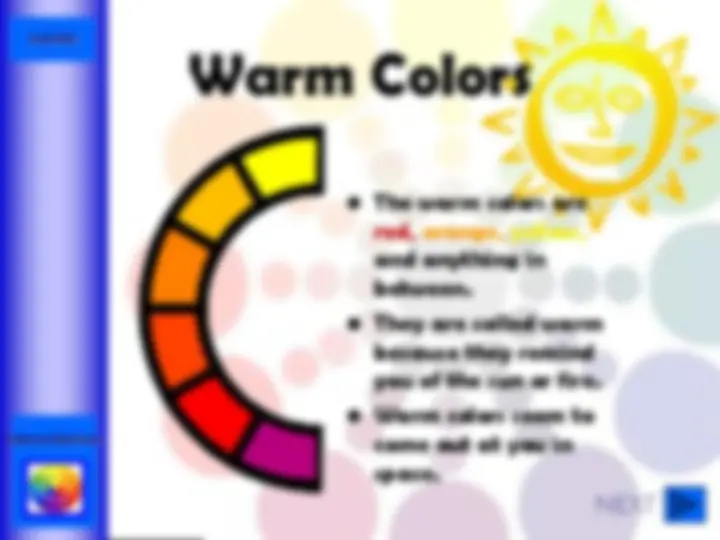
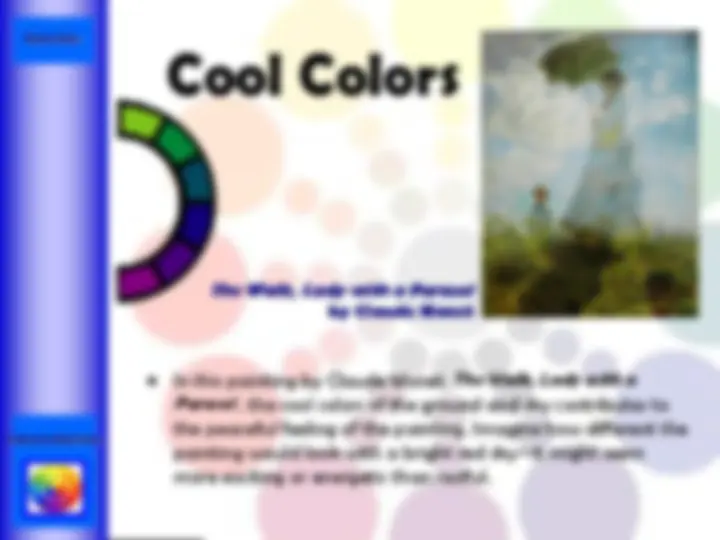
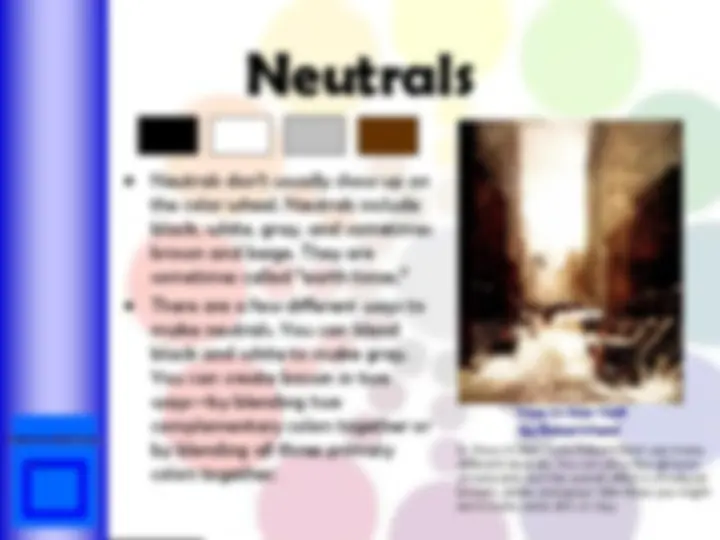
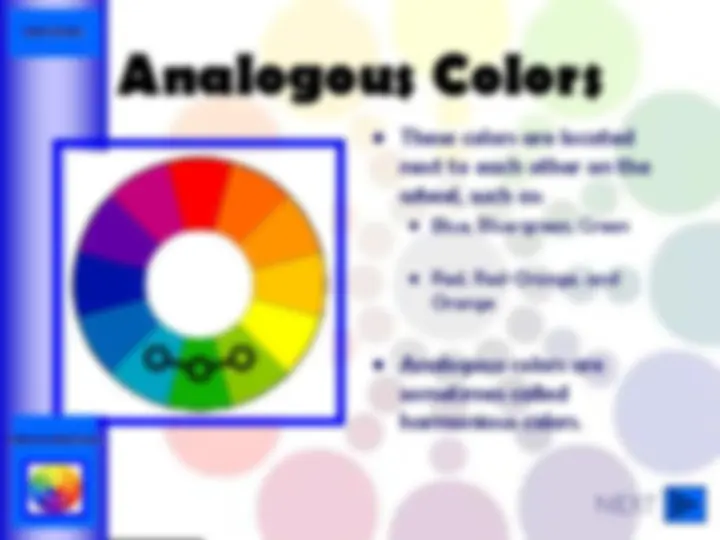

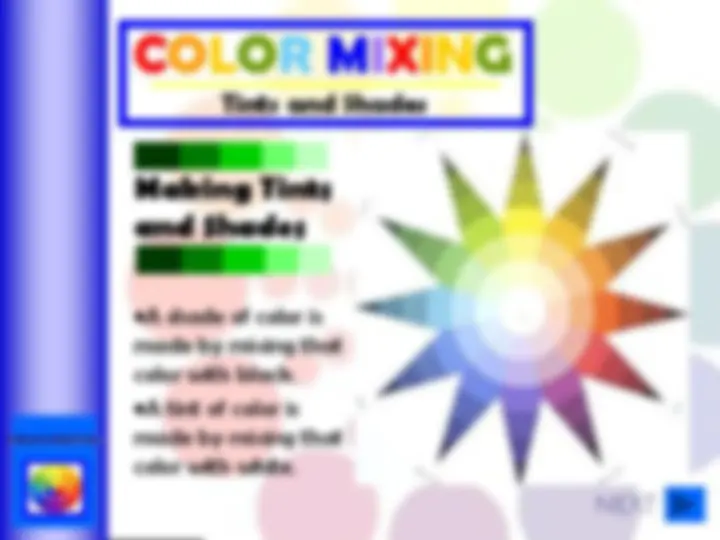
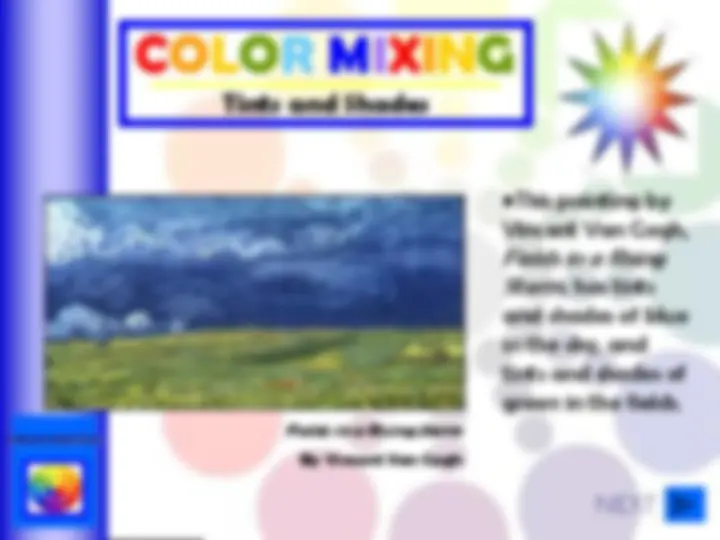
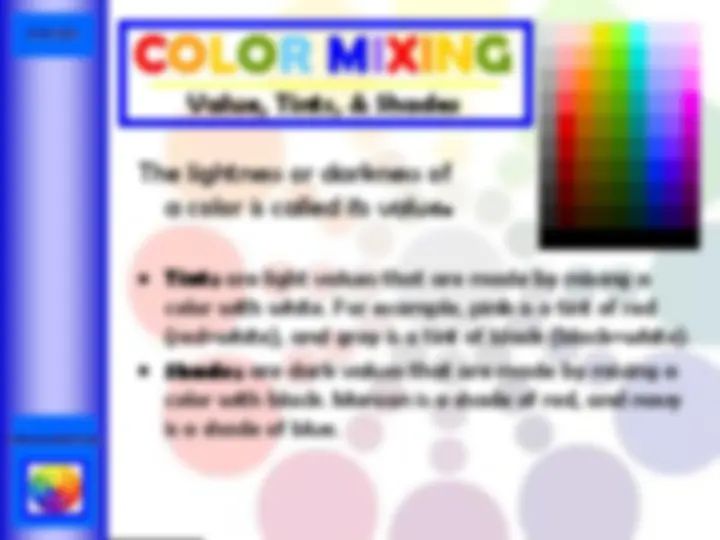
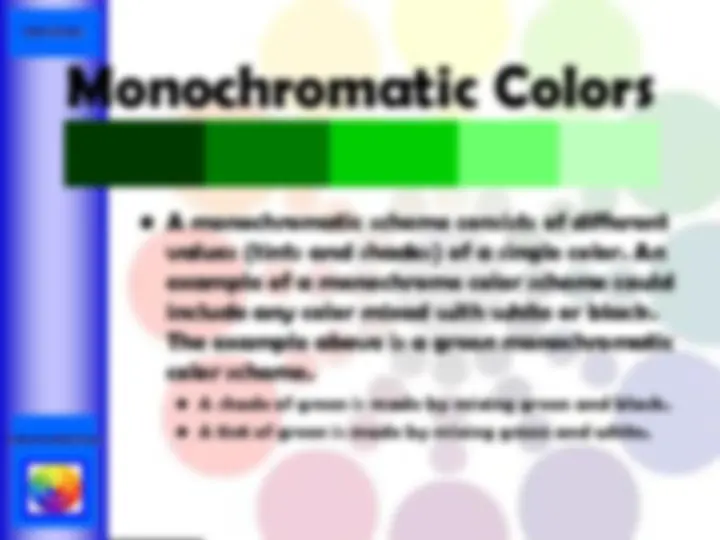
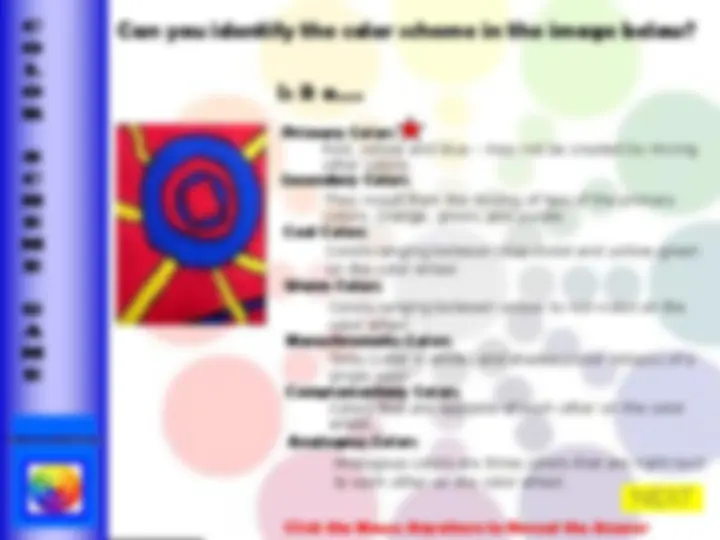
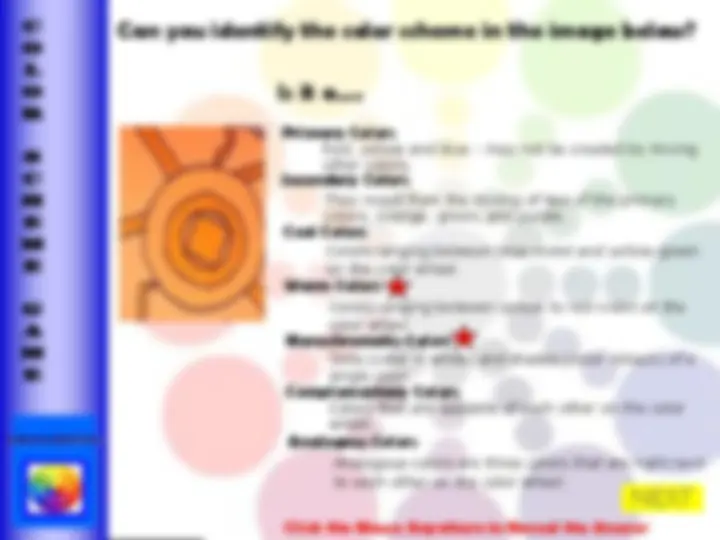

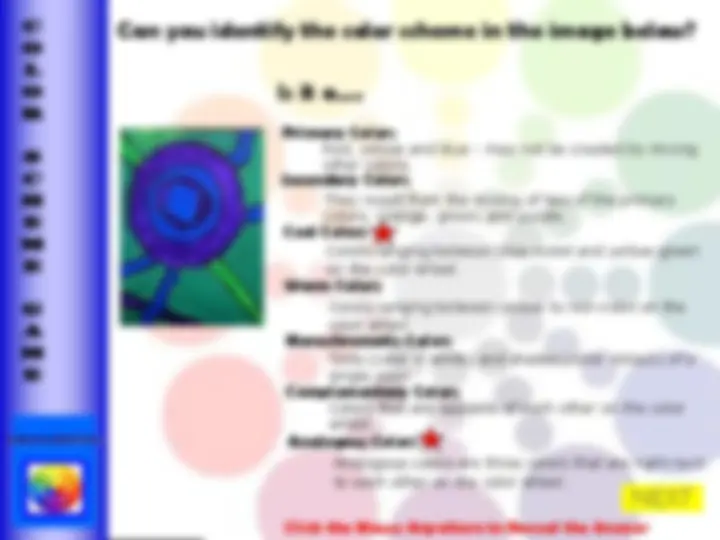
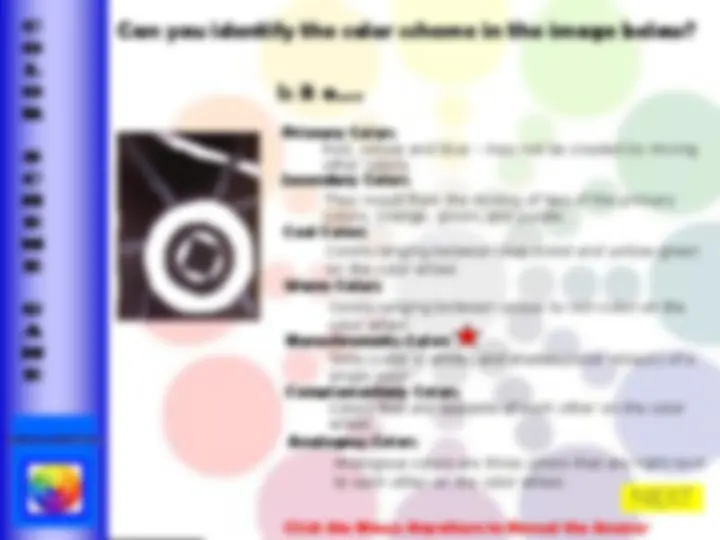
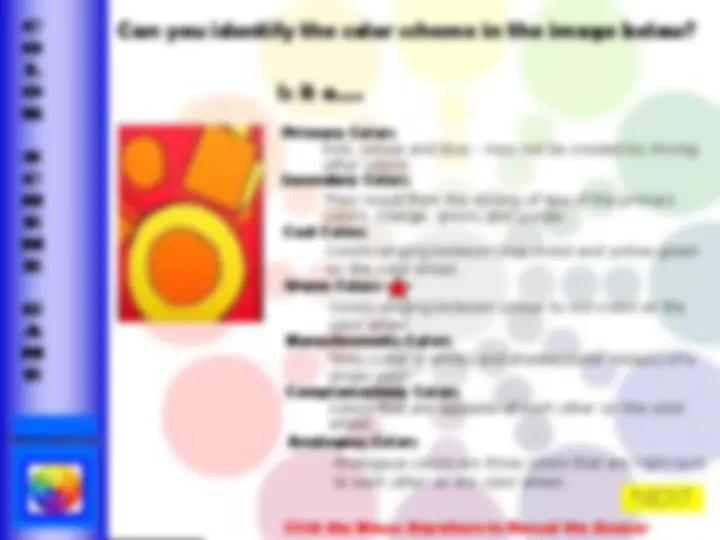
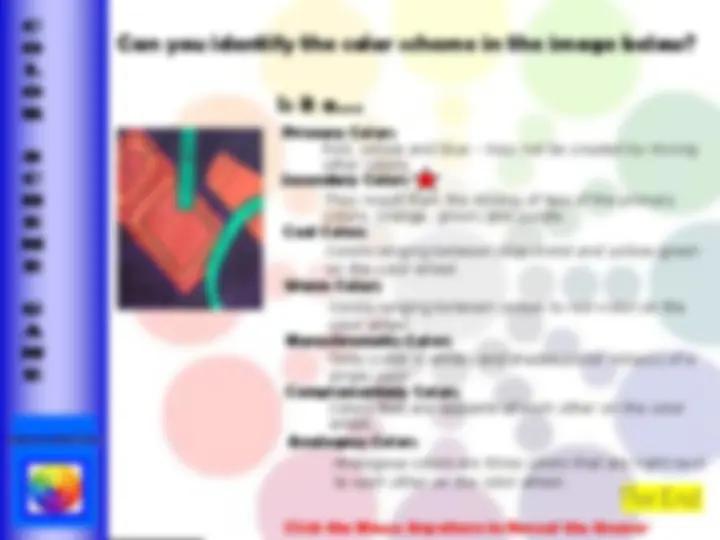
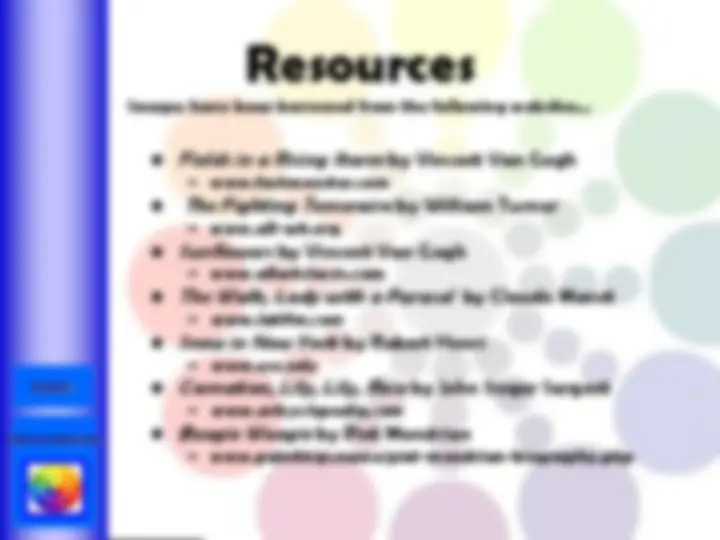



Study with the several resources on Docsity

Earn points by helping other students or get them with a premium plan


Prepare for your exams
Study with the several resources on Docsity

Earn points to download
Earn points by helping other students or get them with a premium plan
Community
Ask the community for help and clear up your study doubts
Discover the best universities in your country according to Docsity users
Free resources
Download our free guides on studying techniques, anxiety management strategies, and thesis advice from Docsity tutors
An introduction to the color wheel, its components, and various color schemes. Artists use the color wheel to understand color relationships and create new hues. primary, secondary, and intermediate colors, their locations on the wheel, and how to create them. Additionally, it covers color schemes such as complementary, analogous, and monochromatic.
Typology: Summaries
1 / 31

This page cannot be seen from the preview
Don't miss anything!
























An Introduction to the Color Wheel and Color Theory
Resource List (^) NEXT
Weblinks
NEXT
COLOR MIXING
When you mix the Primary Colors together, you get the Secondary Colors. What colors do these make?
Click the Mouse Anywhere to Reveal the Answers NEXT
Return to Main Page
Return to Main Page
Click on the Red Boxes to the Right to Proceed
Primary Colors
Boogie Woogie By Piet Mondrian
Return to Main Page
Secondary Colors
Tertiary Colors
Primary Colors
Return to Main Page
Tertiary Colors
Cool Colors
NEXT
Return to Main Page
The Fighting Temeraire by William Turner
Return to Main Page
Cool Colors
The Walk, Lady with a Parasol by Claude Monet
Return to Main Page
Warm Colors
Snow in New York by Robert Henri Indifferent neutrals. You can see a few glimpsesSnow in New York, Robert Henri uses many of red paint, but the overall effect is of naturalbrowns, whites and grays--like those you might see in rocks, sand, dirt, or clay.
Return to Main Page
Sunflowers By Vincent Van Gogh
Return to Main Page
Color Schemes
Complementary Colors
NEXT
Return to Main Page
Color Schemes
Return to Main Page
COLOR MIXING
and shades of blue in the sky, and tints and shades of green in the fields. Fields in a Rising Storm By Vincent Van Gogh
Return to Main Page
COLOR MIXING
NEXT